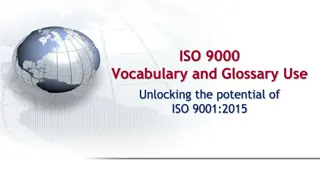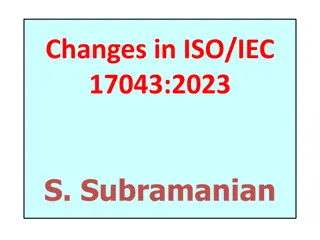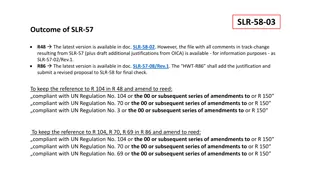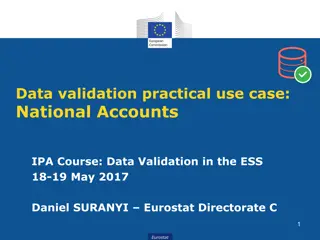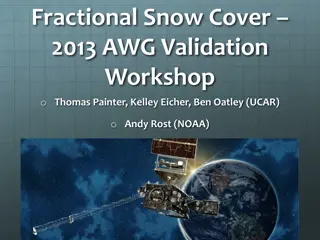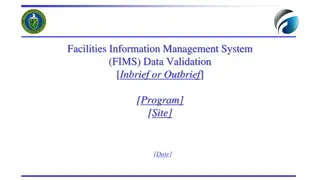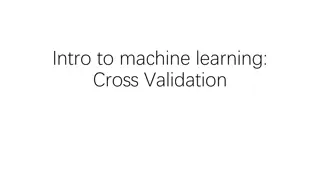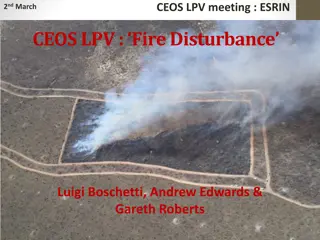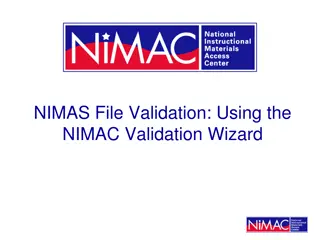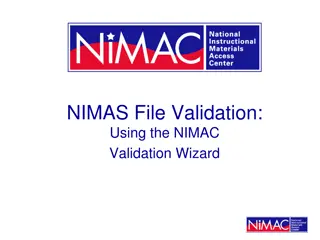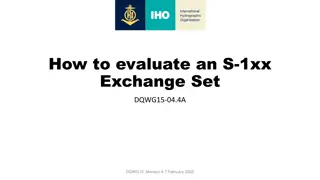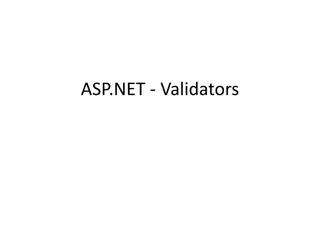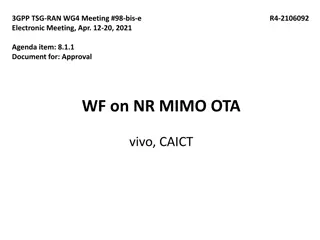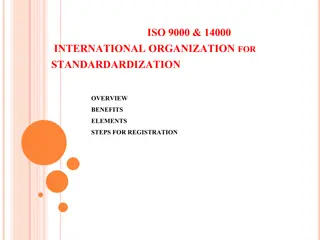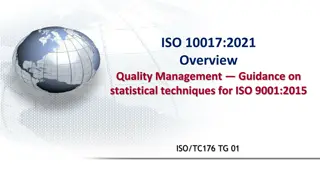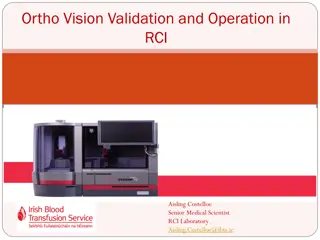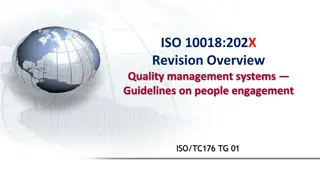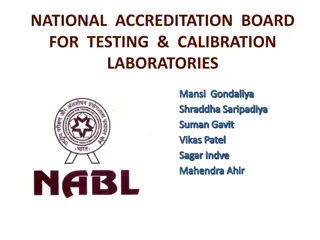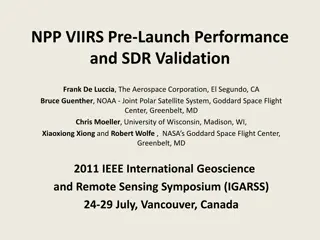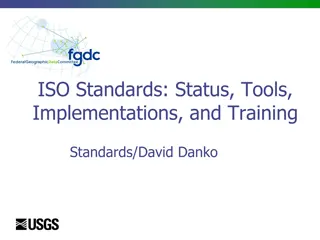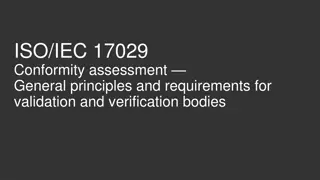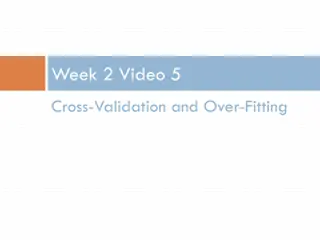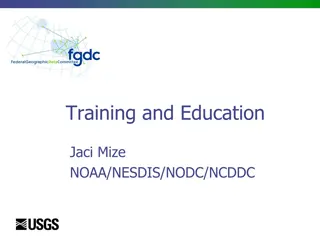Principles of Data Validation and Quality Evaluation According to ISO Standards
Explore the key principles of data validation and quality evaluation as outlined by ISO standards. The content covers the importance of logical consistency, format consistency, and the ordering of data quality evaluation process. It delves into the assessment of data completeness, accuracy, and suitability for further evaluation. Learn about the significance of adhering to logical rules of data structure and conceptual consistency in ensuring data quality.
Download Presentation

Please find below an Image/Link to download the presentation.
The content on the website is provided AS IS for your information and personal use only. It may not be sold, licensed, or shared on other websites without obtaining consent from the author. Download presentation by click this link. If you encounter any issues during the download, it is possible that the publisher has removed the file from their server.
E N D
Presentation Transcript
DATA VALIDATION ISO principles Data Validation ISO principles
CONCEPT OF DATA QUALITY Data Validation ISO principles
ISO 19157 ORDERING IN DATA QUALITY EVALUATION actual dataset format consistency evaluation (1) no not readable part readable? yes readable part of actual dataset other logical consistency evaluation (2) no conformant with rules? data items violating rules yes data suitable for further assessment Data Validation ISO principles
ISO 19157 ORDERING IN DATA QUALITY EVALUATION data suitable for further assessment completeness evaluation (3) items present in actual data and ground truth? no items present in either actual data or ground truth yes features present both in actual and ground truth data accuracy evaluation (4) Data Quality Result Data Validation ISO principles
FORMAT CONSISTENCY Format consistency degree to which data is stored in accordance with the physical structure of the dataset Format consistency is described in S-100 part 10 Encoding formats S-100 does not mandate particular encoding formats so it is left to developers of product specifications to decide on suitable encoding standards and to document their chosen format. The issue of encoding information is complicated by the range of encoding standards that are available, which include but are not limited to: ISO/IEC8211, GML, XML, GeoTiff, HDF-5, JPEG2000. Data Validation ISO principles
LOGICAL CONSISTENCY - DEFINITION Logical Consistency is defined as the degree of adherence to logical rules of data structure, attribution, and relationships (data structure can be conceptual, logical or physical). If these logical rules are documented elsewhere (for example in a data product specification) then the source should be referenced (for example in the data quality evaluation). Data Validation ISO principles
LOGICAL CONSISTENCY ITEMS conceptual consistency adherence to rules of the conceptual schema domain consistency adherence of values to the value domains topological consistency correctness of the explicitly encoded topological characteristics of a dataset Data Validation ISO principles
CONCEPTUAL CONSISTENCY S-100 part 1, conceptual schema language. It provides description of: classes attributes basic data types primitive types complex types predefined derived types enumerated types codelist types relationships and associations composition and aggregation stereo types optional, conditional and mandatory attributes and associations naming and name spaces notes packages Data Validation ISO principles
DOMAIN CONSISTENCY This is described in S-100 Part 5 Feature Catalogue. This Part provides a standard framework for organizing and reporting the classification of real world phenomena in a set of geographic data. It defines the methodology for classification of the feature types and specifies how they are organized in a feature catalogue and presented to the users of a set of geographic data. This methodology is applicable to creating catalogues of feature types in previously uncatalogued domains and to revising existing feature catalogues to comply with standard practice. It applies to the cataloguing of feature types that are represented in digital form. Its principles can be extended to the cataloguing of other forms of geographic data. Data Validation ISO principles
TOPOLOGICAL CONSISTENCY This is described in S-100 Part 7 Spatial Schema. It supports 0, 1, 2, and 2.5 dimensional spatial schemas and two levels of complexity geometric primitives and geometric complexes. S-101 Validation Checks.xlsx lists a number of Topological checks. Inherited from S-58 Validation checks that apply to S-57 Topological Validation. Based on ISO 19125-1:2004 Geometry Data Validation ISO principles
DEFINITIONS FOR ISO 19125-1: 2004 GEOMETRY Polygon - A Polygon has a geometric dimension of 2. It consists of a boundary and its interior, not just a boundary on its own. It is a simple planar surface defined by 1 exterior boundary and 0 or more interior boundaries. The geometry used by an S-57 Area feature is equivalent to a Polygon. Polygon boundary - A Polygon boundary has a geometric dimension of 1 and is equivalent to the outer and inner rings used by an S-57 Area feature Line String - A LineString is a Curve with linear interpolation between Points. A LineString has a geometric dimension of 1. It is composed of one or more segments each segment is defined by a pair of points. The geometry used by an S-57 Line feature is equivalent to a LineString Data Validation ISO principles
DEFINITIONS FOR ISO 19125-1: 2004 GEOMETRY Line - An ISO 19125-1:2004 line is a LineString with exactly 2 points. Note that the geometry used by an S-57 Line feature is equivalent to a LineString, not a line in ISO 19125-1:2004 terms. In this document the term Line refers to an S-57 Line feature or a LineString which can have more than two points. Point - Points have a geometric dimension of 0. The geometry used by an S-57 Point feature is equivalent to an ISO 19125-1:2004 point. Reciprocal inversely related or opposite. Data Validation ISO principles
GEOMETRIC OPERATOR RELATIONSHIPS In ISO 19125-1:2004 the dimensionally extended nine-intersection model (DE-9IM) defines 5 mutually exclusive geometric relationships between two objects (Polygons, LineStrings, and/or Points). One and only one relationship will be true for any two given objects: 1. WITHIN 2. CROSSES 3. TOUCHES 4. DISJOINT 5. OVERLAPS Data Validation ISO principles
OTHER OPERATORS TO HELP DEFINE THE RELATIONSHIP 1. CONTAINS - the reciprocal of WITHIN - within is the primary operator; however, if a is not within b then a may contain b so CONTAINS may be the unique relationship between the objects. 2. EQUAL - a special case of WITHIN / CONTAINS. 3. INTERSECTS - reciprocal of DISJOINT - have at least one point in common 4. COVERS and is COVERED_BY - reciprocal operators - extends CONTAINS and WITHIN respectively 5. COINCIDENT Data Validation ISO principles
EXAMPLE WITHIN a) Polygon / Polygon b) Polygon / LineString c) LineString / LineString d) Polygon / Point e) LineString / Point Data Validation ISO principles
EXAMPLE CROSSES Note that example c) shows one solid line and one dashed line their interiors intersect. If any Line were split into two separate Line features at the intersection point then the relationship would be TOUCHES because a boundary would be involved. Data Validation ISO principles
EXAMPLE TOUCHES Note the Polygon touches Polygon example (a) is also a case where the Polygon boundaries are COINCIDENT. In the Polygon/LineString example two of the LineStrings that share a linear portion of the Polygon boundary are also COINCIDENT with the Polygon boundary Data Validation ISO principles
EXAMPLE DISJOINT This translates to: Geometric object a is disjoint from Geometric Object b if the intersection of a and b is the empty set. Data Validation ISO principles
EXAMPLE OVERLAPS Note: Lines that OVERLAP are also COINCIDENT Data Validation ISO principles
EXAMPLE EQUALS Geometric object a is spatially equal to geometric object b. Data Validation ISO principles
EXAMPLE COVERS AND IS COVERED BY Given two geometric objects, a and b, if a is COVERED_BY b then b must cover a No point of geometry a is outside geometry b. Note that the figure above on the left is an example of Lines that are COVERED_BY a polygon. The figure on the right is NOT an example of a Line that is covered by a Polygon it is an example of a Line that TOUCHES a Polygon. In both cases the Lines are COINCIDENT with the Polygon boundary. Data Validation ISO principles
EXAMPLE COINCIDENT Above are examples of objects COINCIDENT with the boundary of a Polygon. LineStrings following a portion of a Polygon boundary or Polygons sharing a boundaryportion. Note that by definition a Line can be COINCIDENT with an interior boundary of a Polygon. Example of two coincident lines. Data Validation ISO principles
COMPLETENESS Completeness is defined as the presence and absence of features, their attributes, and relationships. It consists of two data quality elements: commission, excess data present in a dataset; omission, data absent from a dataset. Data Validation ISO principles
ACCURACY Positional accuracy is defined as the accuracy of the position of features within a spatial reference system. It consists of three data quality elements: absolute or external accuracy: closeness of reported coordinate values to values accepted or as being true; relative or internal accuracy: closeness of the relative positions of features in a dataset to their respective relative positions accepted as or being true; gridded data positional accuracy: closeness of gridded data spatial position values to values accepted as or being true. Data Validation ISO principles
METAQUALITY Metaquality = information describing the quality of data quality Metaquality describes the quality of the data quality results in terms of defined characteristics Metaquality elements are a set of quantitative and qualitative statements about a quality evaluation and its result. The knowledge about the quality and the suitability of the evaluation method, the measure applied and the given result may be of the same importance as the result itself Data Validation ISO principles
DESCRIBING METAQUALITY Confidence trustworthiness of a data quality result Representativity degree to which the sample used has produced a result which is representative of the data within the data quality scope Homogeneity expected or tested uniformity of the results obtained for a data quality evaluation Data Validation ISO principles


